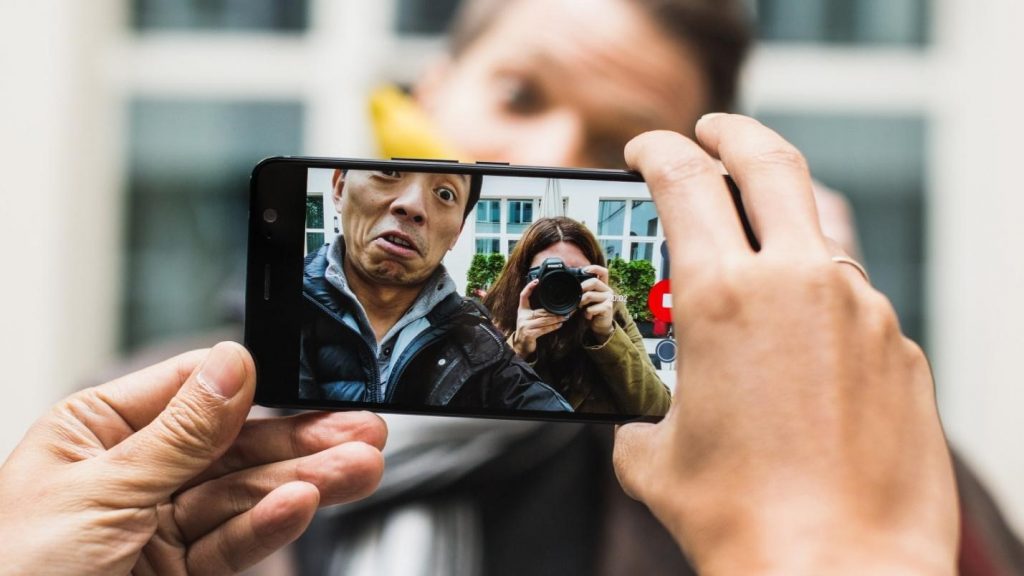
Today, you can hardly find a person who has never used their smartphones for shooting videos. Advanced technologies have turned the devices that were initially used for making and receiving calls into high-end video-making tools. With smartphone cameras becoming more ubiquitous, more and more people start using them for creating professional projects, including shooting cinematic videos. If you also want to shoot RAW, slow-motion, monochrome, 4K, and other types of videos, it’s high time you tapped into the potential of your pocket-sized camera.
Below are some simple tips that will help you use your smartphone camera to the fullest and create thumb-stopping mobile videos within the shortest possible time.
- And if you want to add particular charm to your projects, consider sprucing them with royalty free clipart images and other stock media tools.
#1 Keep It Steady
Smartphones are light and small, making them hard to keep stable. Shaky videos might be your style or intention, but in most cases, they are not. So, make it your rule to shoot using both hands, keeping the device as close to your body as possible. Prop your phone or your arms on a fixed structure like a table or wall. And if you want to get more stability, consider investing in professional tools, such as tripods or handheld gimbals. This will go a long way towards helping you lock down or smooth your footage.
#2 Lighting and Exposure
It’s not a secret that smartphone cameras are fitted with small image sensors and have low dynamic range. Therefore, shooting in dark environments can result in grainy or otherwise poor quality footage. So, it’s in your best interest to try to shoot in well-lit areas if possible. But if you need to shoot in a dark environment, be sure to get a light. Most modern cameras do offer touch focus and exposure. Use this feature to properly expose for a specific shot. Thus, you’ll manage to get the most out of your scene and produce more attractive footage.
#3 Orientation and Composition
Despite the growing popularity of vertical videos and their spread across social media these days, you definitely don’t want to abuse this type of shooting. Vertical or portrait-style video shooting should be intentional. In general, most mobile videos should be shot horizontally. Horizontal videos are panoramic, atmospheric, and thus visually-appealing that their vertical counterparts. When shooting horizontally, you shouldn’t worry about cropping or other issues that may come with uploading vertical videos to your favorite video sharing platforms.
For composition, the closer you get to your subject, the better. This will help you produce sharper footage. And by getting closer, you also gain a shallower depth of field, which can look more cinematic. You do have the option to zoom using the camera zoom, but this will noticeably degrade the image quality. If you want more focal range, though, look into a telephoto, fisheye, macro, or other lens adapter.
#4 Don’t Forget about Audio
Audio quality is just as important as your image quality. It’s not a secret that smartphones and tablets generally have lower quality built-in microphones that pick up unwanted ambient sounds like wind, traffic, and other kinds of background noise. Audio might not be a big concern if you’re filming like Aurora Borealis or an amusement park ride. But you’re shooting, say, an interview, audio is vital to the viewing experience. Be sure to find a quiet location or use an external microphone or the tool that plugs in directly to your smartphone.
#5 Get Creative with Apps
Today, there is a deluge of mobile video enhancing applications that can improve the functionality of your smartphone camera. You can avail yourself of a wide array of image enhancing tools like color correction or image stabilization, specialty shooting modes like hyperlapse or slow-motion, or even video editing and visual effects. They tap in directly to your camera’s full capabilities and enable you to get closer to the exact image you want.
Overall, when shooting mobile videos, the most important thing to understand are your camera’s limits. That way, you can either make up for any features or settings that are lacking.